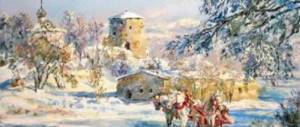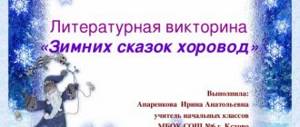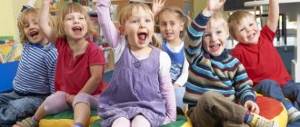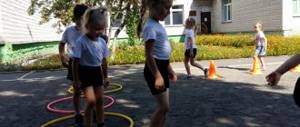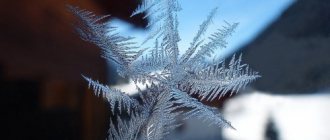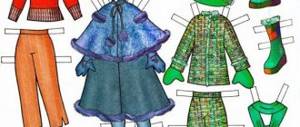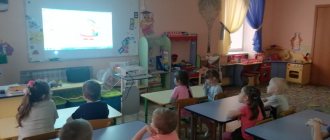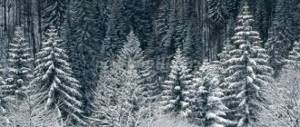Conversation in winter
06.12.2018
Conversation on the topic: Safety in winter.
Target:
consider various life and health safety situations in winter; repeat the rules of the road; to form the ideas of younger schoolchildren about road safety when moving along streets and roads in winter; to develop skills in following the basic rules of behavior of students on the street and road, in order to prevent children's road traffic injuries.
Winter walks always bring great joy to children. Already in the fall, most children are looking forward to the snow, so they can go sledding, ice skating, or play snowballs. But in winter there are a lot of injuries. Basic rules will help protect yourself and your children from the annoying consequences of winter walks. As practice shows, the cold season is a traumatic period for children and adults.
Conversation about ice.
Explanation of the word "ice".
Ice and black ice are completely different concepts. The first is a phenomenon of nature, the second is its state. Glaze is ice on the surface that appears when the temperature drops as a result of the freezing of water formed by melting snow and ice during a thaw. When temperatures fluctuate around zero, icy conditions occur quite often. Ice is the formation of ice on the ground, trees, wires, etc., associated with the freezing of rain falling on a cold surface. Most often, ice occurs during a sharp warming from frost, when warm air passes over a very cold surface. Ice conditions are usually not remembered for more than 300 days a year, but those 10-20 days when it happens are not forgotten for a long time. This is a much rarer and more dangerous phenomenon, especially for energy workers and motorists, since it is difficult to predict and usually develops quickly and intensively. It is necessary to use ice correctly For the benefit of the whole family Safety on ice
Ice of a greenish tint, 7 cm thick is safe, it can withstand one person.
Unstable ice - near water drainage (from factories, factories). Thin and loose ice - near reeds, bushes, under snowdrifts. Unreliable thin ice - in places where springs flow, fast currents, or where streams flow into rivers. It is prohibited to:
Go out alone on fragile ice.
Gather in a group on a small area of ice. Test the strength of the ice with kicks and sticks. Cross the pond on fragile ice one after another at a short distance. Walk on the ice with your hands in your pockets. Carry a firmly attached backpack behind your back. You can and should:
Don’t take risks!
If the ice cracks or sag, stop immediately and get off the ice. Make sure the ice is strong. Ask adults for permission to cross. It is better to cross a frozen river (lake) on skis, and in this case: unfasten the ski fastenings in order to quickly remove them if necessary; Hold ski poles in your hands without looping them around your hands, so that in case of danger you can immediately throw them away. If you are forced to cross a body of water, it is safest to stick to the beaten paths or follow an already laid ski track. But if they are not there, before going down onto the ice, you need to look around very carefully and outline the upcoming route. Areas under snow should be avoided. When crossing a pond in a group, it is necessary to maintain a distance from each other (5 - 6 m). If you have a backpack, hang it over one shoulder. If you fall through the ice:
You need to spread your arms wide along the edges of the ice, refrain from diving headlong;
Move to the edge of the ice hole, the gap, where the current does not drag you under the ice. Don’t panic, try to get onto the ice without sudden movements, crawling with your chest and alternately pulling your legs to the surface, spreading them wide. Having got out of the gap, you need to roll away and crawl in the direction from which you came. Having reached the shore, go quickly home, change into warm, dry clothes, drink hot tea Rules on the roads:
In snowfall: At this time, visibility noticeably deteriorates, drifts appear, the movement of pedestrians and vehicles is limited and difficult. Snow blinds pedestrians and interferes with their view of the road. For the driver, visibility on the road also deteriorates. In frosty weather: Car windows become covered with frost, making it very difficult for the driver to keep an eye on the road. Crossing the street in front of a nearby car is always dangerous, and now even more so. And so that no trouble happens to you, take your time, wait until all the transport has passed. Only after this can you cross the street. Do not forget that pedestrian movement may be difficult due to ice on the roadway. In cities, streets are sprinkled with special chemicals to prevent snow from forming. As a result, even in moderate frost, the roadway can be covered with a snow-water slurry, which, in the form of a suspension, is lifted into the air by the wheels of passing vehicles. The suspension settles on car windshields, preventing drivers from monitoring the road situation. In such a situation, it is even more difficult for the driver to notice the pedestrian! In icy conditions: After warm days, cold weather has set in. The road was covered with ice and became slippery. Under these conditions, appearing in front of nearby traffic is very dangerous: on a slippery road it is difficult to stop a car. So be especially careful on your way home. Do not rush, because you may unexpectedly fall and end up under the wheels. Remember that you can only protect yourself from an accident by impeccably following the traffic rules. In sunny weather: The bright sun, oddly enough, is also a hindrance. The bright sun and white snow create a glare effect; a person seems to be “blinded.” Therefore you need to be extremely careful. Mittens should be treated with caution: it is better not only to hold the child tightly by the hand dressed in a woolen house, but also to hold him by the wrist. Warm winter clothes prevent you from moving freely and hinder your movements. If you slip, it is more difficult to maintain your balance in such clothes. In addition, hoods, furry collars and winter hats also obstruct the view. During the thaw: At this time, treacherous puddles appear on the street, under which ice is hidden. The road becomes very slippery! Therefore, when crossing the roadway, it is better to wait until there are no passing cars. Under no circumstances should you run across the road, even at a crosswalk! Cross only in steps and be careful. Remember: The number of obstructed viewing spots increases in winter. Prevents you from seeing approaching traffic:
- snowdrifts on the side of the road;
- narrowing of the road due to unremoved snow;
- standing snowy car.
This means that you need to be extremely careful, be sure to stop first and, only after making sure that there is no traffic nearby, cross the roadway.
"Clothes for a winter walk"
When going for a walk, you need to remember the main thing: you don’t need to wrap your child up! Overheating is no better than cooling. Clothes should not restrict movement; they should be comfortable, light and warm at the same time. Winter shoes, like any other, should be comfortable. Even for warm boots that still collect snow, it is better to choose boots that can be tucked into your trouser legs, isolating them from snow. Make sure that the soles are textured - the child will slip less on snow and ice. To insure against loss of mittens or gloves, sew an elastic band to them.
Sledding, ice skating
For sledding, your child should be dressed warmly.
- Before the child sits on the sled, it is necessary to check whether there are any malfunctions.
- It is not advisable to sled down a hill; it is better to ride on ice.
- The child needs to be explained in advance that discipline and consistency must be observed on the slide.
- Adults themselves need to make sure that the slide is safe, so carefully study the area before riding. The slope should not go onto the roadway, and it is better to ride kids down small, gentle snow slides, and in uncrowded places and in the absence of trees, fences and other obstacles.
- You should not allow your child to sled while lying on his stomach, as he may damage his teeth or head.
- You can't sled while standing! It is dangerous to tie sleds to each other.
- You can only transport a child across the road in a sled that is pushed in front of you. If they only have a tow rope, the child must be removed. It should be noted that sleds travel slowly on a road with little snow and patches of asphalt, so be especially vigilant.
- Games around the house
Children should not be allowed to play near the road. It is necessary to teach children that they should not run out onto the roadway. It is undesirable to lie around and play in snowdrifts, which are located, for example, under the windows of houses or near the entrance. And, of course, don’t let them jump into a snowdrift from a height. It is not known what the fluffy snowball hides in it: under the freshly fallen snow there can be anything: broken bottles, stones or wires, there may also be garbage there. You should not put snow, ice crusts, or icicles in your mouth: they contain a lot of invisible dirt and germs that can cause illness.
“Dangers that await us in winter”:
these are icicles, ice, frost, thin ice.
Be careful, icicles!
It is important to pay attention to icicles and mountains of snow hanging from the roofs of houses. Always pay attention to fenced areas of sidewalks and never enter dangerous areas. If, while driving along the sidewalk, you hear a suspicious noise above, you should not stop, raise your head and examine what happened there. Perhaps this is a melting of snow or ice block. You can't run away from the building either. You need to press yourself against the wall as quickly as possible, the roof canopy will serve as shelter. To avoid injury.
Help with frostbite:
Frostbite
occurs when a person remains inactive for a long time in very cold water or on the street during severe frosts. Frostbite occurs especially often in winter, in places where the air temperature drops very low.
First of all, a person freezes those parts of the body that are least protected from wind and cold: hands, face, legs.
The less a person is protected from wind and cold, the greater the likelihood of frostbite. Frostbite often occurs. This can happen, for example, when a person goes very far in winter and the soles of his shoes are thin, therefore, his feet freeze very quickly.
Frostbite on the hands and face is very common. Hands get frostbitten because they most often have to touch icy objects, but the face gets frostbitten due to the poorest protection from frost.
Conversation for children Beware of icicles
Conversation on the topic: “Attention icicles!” Be careful, icicles!
If you find icicles hanging on the roof of your house, you must contact a service organization. Utility workers should respond to your message.
It is also necessary to remember that most often icicles form above gutters, so these areas of house facades can be especially dangerous. They must be avoided. Also, be aware of icy sidewalks. Usually a thicker layer of ice forms under the icicles.
You should be careful and, if possible, not go close to the walls of buildings. If, while driving along the sidewalk, you hear a suspicious noise above, you should not stop, raise your head and examine what happened there. Perhaps this is a melting of snow or ice block. You can't run away from the building either. You need to press yourself against the wall as quickly as possible, the roof canopy will serve as shelter.
Snow falling from the roofs.
Heavy snowfalls and warming temperatures can cause icicles to form and snow to fall off the roofs of buildings.
The removal of snow mass accumulated on the roof is very dangerous!
As a rule, such a mass is heterogeneous in composition and contains both loose masses of melted snow and pieces of compacted ice, often of significant volume and mass.
Remember: most often icicles form above gutters, so these areas of house facades can be especially dangerous. They must be avoided.
Observe: caution and, if possible, do not go close to the walls of buildings. If, while driving along the sidewalk, you hear a suspicious noise above, you should not stop, raise your head and examine what happened there.
Perhaps this is a melting of snow or ice block. You can't run away from the building either. You need to press yourself against the wall as quickly as possible, the roof canopy will serve as shelter.
One of the factors preventing the formation of icicles and snow melting is the regular and timely removal of snow from roofs. In the absence of snow, there is simply nothing for icicles to form from, which means the people below are safe.
Be careful - icicles!
Icicles on the roofs of houses pose a great danger because they sometimes fall.
It is absolutely impossible to guess the very moment when the icicle decides that it is already tired of hanging. And if you think that an ice icicle cannot cause much harm, then you are very mistaken.
Therefore, always pay attention to fenced areas of sidewalks and under no circumstances enter dangerous areas.
Most often, icicles form above gutters; these areas of house facades can be especially dangerous. Also, pay attention to icy sidewalks. Usually a thicker layer of ice forms under the icicles.
Even if there is no fencing, you should be careful and, if possible, not go close to the walls of buildings.
If you are walking along the sidewalk and hear a suspicious noise upstairs, you should not stop, raise your head and see what is making the noise there. You can't run away from the building either. On the contrary, you need to press yourself against the wall as quickly as possible so that the roof canopy serves as shelter.
Conversation on life safety: “Snow – good and bad” (middle group)
Conversation on life safety: “Snow – good and bad” (middle group)
Target:
To develop in children knowledge about the dangers that may be associated with
snow; teach how to act correctly in a situation involving this danger; develop dialogic speech, memory, thinking, attention;
develop habitual self-preservation skills.
Preliminary work:
monitoring: blizzards, snow falling from the roof;
viewing the painting “Ice”; consolidating children's knowledge about the properties of snow during walks.
Progress of the lesson:
(The children sit in a semicircle. There is a knock on the door. The teacher brings into the group a Bibabo doll, Dunno wrapped in a scarf.)
Dunno: (in a hoarse voice)
Hello guys, am I late?
Educator:
No. Dunno why are you dressed so warmly? And what's wrong with your voice?
Dunno: (in a hoarse voice)
When the snow fell I was very happy. He quickly got dressed and ran outside. The snow there was so clean and white that I couldn’t resist trying it, but it didn’t taste good. Then my friends and I played for a long time. My clothes got wet, I began to freeze and ran home. I had a sore throat at night,
the temperature has risen. Now I take medicine and don't go out for walks.
Educator:
Today we will talk with the children about snow. Dunno, sit and listen: when it snows, it’s good, and when it snows, it’s bad.
Guys, do you think snow is good or bad?
Children:
Good and bad.
Educator:
Children, think and tell me, please, is it bad when it snows? And why?
Children:
When you eat it (dirty, cold, you’ll get sick); when we take it with bare hands (if your hands are cold, you can catch a cold); when we sit or roll around in the snow (if our clothes get wet, we’ll freeze and get sick); when we walk through snowdrifts (there may be branches, sticks sticking out, holes in the snow - you can get hurt).
Educator:
That's right, for whom else is snow bad? Why?
Children:
For animals and birds, because it is difficult for them to find food.
Educator:
Well done children! Dunno, now do you understand why you got sick?
Dunno: (in a hoarse voice)
No! You say that the snow is dirty, but it’s not, it’s clean and white!
Educator:
Dunno, don't argue, please. I invite you to come to the table. Now we will check who is right, Dunno or the children.
(The teacher shows an experiment with snow.)
Educator:
If the snow melts, we will see how dirty it is. You see, Dunno, the children were right - you can’t eat snow!
(Children and Dunno sit on chairs)
Educator:
Guys, please tell me when it snows – is it good?
Children:
When we sled, make snowmen, play snowballs, make a slide, ski.
Educator:
Who else feels good when there is a lot of snow? Why?
Conversation with children of the senior group “Hello, Zimushka - Winter”
Summary of a conversation about Winter for children of the senior group in kindergarten
Program objectives: 1. Summarize and clarify knowledge about winter as a season, winter signs 2. Fix the names of the winter months 3. Develop cognitive interest 4. Help children see and feel the beauty of winter nature
Progress conversations:
Educator: Guys, today we will talk about one time of year. Guess which one? Riddle “I dusted the paths, decorated the windows. She gave the children joy and took them for a ride on a sled.” Educator: What time of year are we talking about? Children: About winter Educator: How did you guess? Children: Children's answers Educator: Look at the picture. What do you see?
Children: It’s snowing, the trees are “bare”, there are snowdrifts on the ground, etc. Educator: How can you characterize winter? What is she like? Children: Snowy, frosty, cold, white, long, etc. Educator: Well done, guys. Go to the table, there are cards with winter phenomena on the table. Each of you must take a card and explain what happens in winter. Children take cards and say in full sentences what is drawn there for us.
In winter, the bear, gopher and hedgehog hibernate.
In winter, children can build a snowman.
In winter, animals change their coats.
In winter, the water in the river freezes.
In winter there is snowfall.
In winter, frost draws patterns on the windows.
In winter there is a snowstorm.
In winter, people wear warm winter clothes.
In winter, the day is shorter than the night.
In winter you can go sledding, skating and skiing.
New Year comes in winter.
Educator: Well done! Winter, like other seasons, includes three months. Name three winter months. Children: December, January and February. Educator: Many beautiful poems have been written about winter, listen to one of them. It was written by I.Z. Surikov White, fluffy snow swirls in the air and quietly falls to the ground and lies down. And in the morning the Field turned white with snow, as if everything had covered it with a shroud. The dark forest covered itself with a wonderful hat and fell asleep under it tightly, soundly... God's days are short, the sun shines little, - Here come the frosts - and winter has come. The toiler-peasant pulled out the sleigh, the children are building the snowy mountains. For a long time now the peasant has been waiting for winter and cold, And he covered the hut with straw from the outside. So that the wind does not penetrate into the hut through the cracks, snow does not blow into the hut, blizzards and blizzards. He is now at peace - Everything around is covered, And he is not afraid of the angry frost. Educator: Homework: Draw “Winter”, and tomorrow in class each of you will talk about your drawing.
We recommend watching:
Abstract of OOD on application in the senior group A tale of winter for children 5 - 8 years old Winter entertainment in the senior group. Script about winter for schoolchildren
Similar articles:
Russian folk tales about winter
Poems about winter for older preschoolers
Poems about winter for 1st grade
Scenario of the holiday “Meeting Winter” for elementary school
Stories about winter, 1st grade
